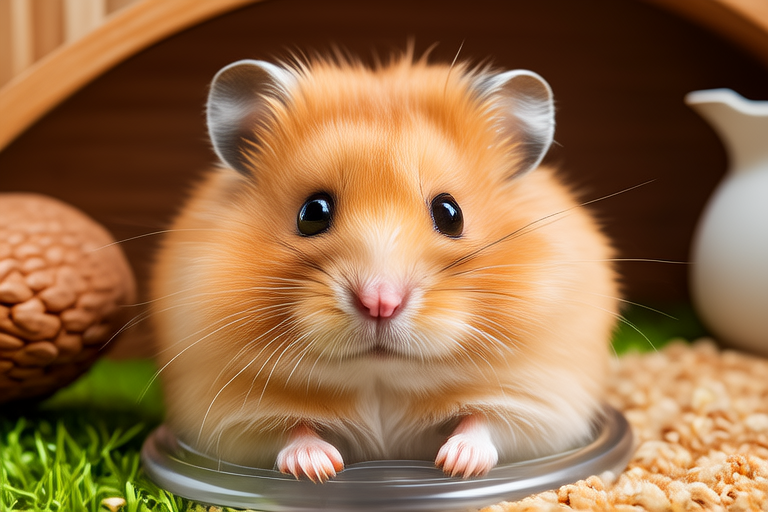Top 10 Secrets Every Hamster Owner Should Know
Welcome to the wonderful world of hamster ownership! These tiny, furry creatures are not only delightful pets but also require careful attention to ensure their happiness and health. Whether you’re a seasoned hamster owner or just bringing one home for the first time, there’s always more to learn about these fascinating animals. This article will provide you with top secrets every hamster owner should know, covering practical tips, lesser-known facts, dietary advice, exercise needs, habitat setup, health indicators, grooming tips, handling techniques, training methods, and common myths debunked.
1. Habitat Setup: Creating a Comfortable Home
The first secret to successful hamster ownership is creating the perfect habitat. A well-designed living space ensures your pet feels secure and happy. Start by choosing the right size cage; Syrian hamsters need at least 80 square inches of floor space, while dwarf species require around 40 square inches. Include a variety of toys such as tunnels, wheels, and chew toys to stimulate mental and physical activity. A cozy hideaway is essential for sleep and relaxation. Ensure the bedding is safe, soft, and absorbent, like shredded paper or aspen shavings. Avoid cedar or pine shavings as they can cause respiratory issues.
2. Diet: Nourishing Your Hamster Properly
Feeding your hamster the right diet is crucial for their overall health. Provide high-quality hamster food pellets as the base of their diet, supplemented with fresh vegetables and fruits. Offer small amounts of carrots, broccoli, apples, and bananas. Always introduce new foods gradually to prevent digestive upset. Limit treats to occasional offerings, and avoid feeding them human snacks, which may be harmful. Fresh water should always be available, either through a sipper bottle or a clean dish.
3. Exercise Needs: Keeping Your Hamster Active
Hamsters are naturally active animals and need plenty of opportunities to exercise. In addition to the toys mentioned earlier, a solid running wheel is essential. Ensure the wheel has a solid surface to prevent injuries. Provide tunnels and platforms for climbing and exploring. Rotate toys regularly to keep your hamster interested and engaged. Daily playtime outside the cage in a hamster-proof area can also help burn off excess energy and prevent boredom.
4. Health Indicators: Monitoring Your Hamster’s Well-being
Regularly checking your hamster’s health is vital for early detection of any issues. Healthy hamsters have bright eyes, clean noses, and smooth fur. Watch for signs of illness such as lethargy, loss of appetite, weight loss, or changes in feces. If you notice anything unusual, consult a veterinarian who specializes in small animals. Regular veterinary check-ups are recommended to maintain your hamster’s health.
5. Grooming Tips: Keeping Your Hamster Clean
Unlike some other pets, hamsters are generally self-groomers, but they still benefit from occasional grooming. Use a soft brush to remove loose hair during shedding seasons. Trim their nails if they become too long, taking care not to cut the quick. Bathe your hamster infrequently, if at all, as they clean themselves thoroughly. Over-bathing can strip natural oils from their skin, leading to dryness and irritation.
6. Handling Techniques: Interacting Safely with Your Hamster
Handling your hamster gently and frequently helps build trust. Approach slowly and allow your hamster to sniff your hand before attempting to pick it up. Support its body fully when holding it, and never lift by the tail. Place the hamster back in its cage gently. Avoid sudden movements or loud noises that might startle them. Regular handling sessions can strengthen the bond between you and your pet.
7. Training Methods: Teaching Your Hamster Tricks
Training your hamster can be fun and rewarding. Start with simple commands like coming when called. Use positive reinforcement, such as treats, to encourage desired behaviors. Teach them to come out of their cage on command by offering a treat. Clicker training is another effective method, where a clicker sound marks correct behavior followed by a reward. Consistency and patience are key to successful training.
8. Lesser-Known Facts: Fascinating Hamster Insights
Did you know that hamsters are nocturnal? They are most active during the night and sleep during the day. Their cheek pouches are used for carrying food and nesting materials. Hamsters are solitary animals and should be housed alone to prevent fighting. They can hibernate in cooler climates, though this is rare in captivity. Understanding these unique traits can help you better meet your hamster’s needs.
9. Common Myths Debunked: Separating Fact from Fiction
Many misconceptions surround hamsters. One common myth is that they are easy to care for. While they are relatively low-maintenance, they still require proper attention to their diet, exercise, and environment. Another myth is that hamsters prefer being held. While some enjoy interaction, others may feel stressed or anxious. It’s important to respect your hamster’s comfort level. Finally, the idea that hamsters are dirty is false; they are clean animals that groom themselves regularly.
10. Practical Tips for Happy Hamsters
To ensure your hamster thrives, follow these practical tips:
- Provide a balanced diet with fresh water.
- Keep the cage clean and free of waste.
- Rotate toys and activities to prevent boredom.
- Handle your hamster gently and frequently.
- Monitor health closely and seek veterinary care when needed.
- Respect your hamster’s need for solitude.
In conclusion, hamsters are wonderful companions that bring joy and entertainment into our lives. By understanding their unique needs and providing a loving environment, you can ensure your hamster lives a long, healthy, and happy life. Remember, every hamster is an individual, so take the time to understand and cater to your pet’s specific preferences and requirements. Happy hamster parenting!
